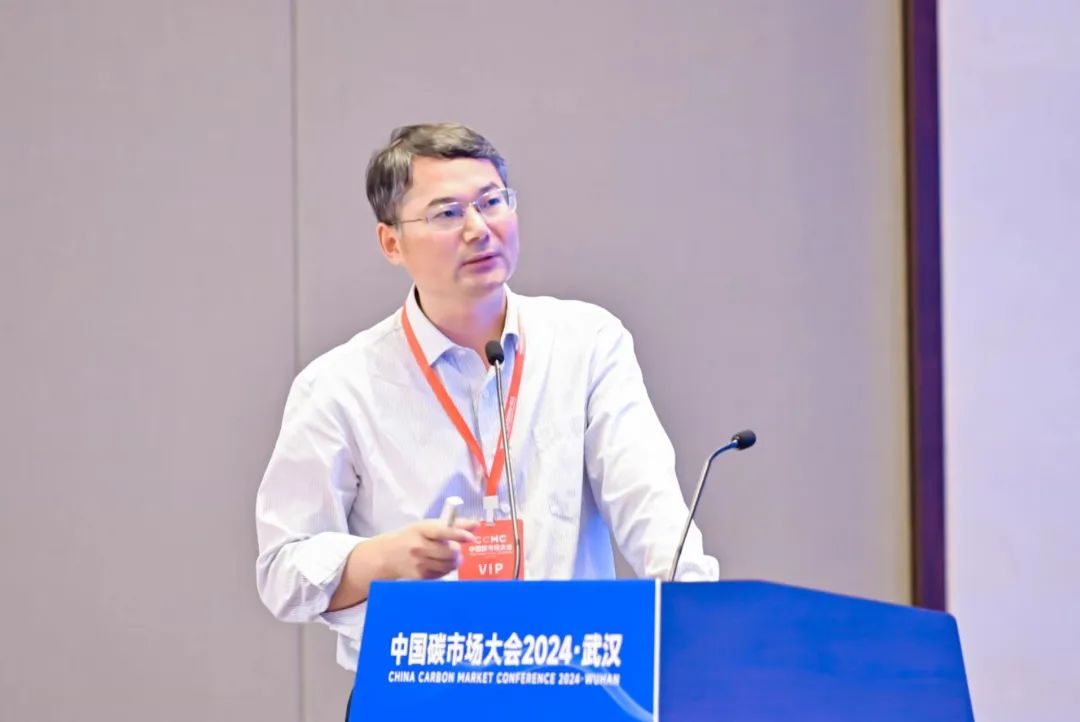Yan Gang, Vice President of the Environmental Planning Institute of the Ministry of Ecology and Environment: Expanding the national carbon market is the most urgent task at present
Regarding the question of why China chose the carbon market rather than carbon tax in terms of market means, on July 21, Yan Gang, deputy director of the Environmental Planning Institute of the Ministry of Ecology and Environment, said at the China Carbon Market Conference 2024 that the carbon market can effectively stimulate technological innovation. He said that after three years of construction and two compliance cycles, China's carbon market has achieved very remarkable results. How to better utilize the function of the carbon market and how to accelerate the development of the carbon market faster, the entire expansion and expansion is the most urgent task at present.

Yan Gang, Vice President of the Environmental Planning Institute of the Ministry of Ecology and Environment
Yan Gang pointed out that there are still several deficiencies in the current construction of carbon market requirements that are more effective, more dynamic, and more internationally influential.
First, the problem of homogenization in a single industry is currently mainly in the power industry, and the cost of emission reduction is relatively close. The problem of homogenization has a certain extent of impact and restriction on the discovery of carbon prices. Second, the number of enterprises covered and the proportion of emissions are too small, covering only more than 2000 enterprises, and the emission proportion only accounts for 40% of the country's carbon emissions. It is urgent to achieve greater functions and effects of the carbon market through expansion. Third, the overall liquidity and activity are insufficient. How to better improve liquidity activity is also the focus of the next step in carbon market construction.
Yan Gang and his team also conducted an analysis on how to determine which industries are suitable to be prioritized or taken the lead in being included in the national carbon market at the current stage, and which industries can be gradually included in the carbon market after a period of incentives, and proposed the urgency of emission reduction. Determination principles in six aspects, including the degree of synergy between pollution and carbon reduction.
The first aspect, the urgency of reducing emissions still depends on the commonality of emissions. In 2020, electricity is 40%, steel is 14%, cement is 11%, and chemical industry accounts for nearly 10% of the country. These industries are all key industries for national carbon emissions. Aluminum smelting directly emits 11% and indirectly emits 5%. Consider including them in the carbon market because of the importance of the industry's contribution to emission reduction.
The second aspect looks at the degree of synergy between pollution reduction and carbon reduction. On the one hand, we must actively respond to climate change and promote the realization of the "double carbon" goal. On the other hand, we must promote the construction of a beautiful China. How to coordinate these two aspects is also a factor that needs to be taken into account in expanding the carbon market. Overall, the top five industries such as electricity and cement account for 80% of the country's carbon emissions, and the main pollutants such as carbon dioxide, nitrogen oxides, mercury, and dioxins account for 60% of the country's total.
The third aspect is to look at industry acceptance. The cement and steel industries are relatively receptive to being included in the carbon market. According to companies, they are also willing to be included in the national carbon market to promote the green and low-carbon transformation of the industry.
The fourth aspect is to look at the basis of data quality. Judging from the current data quality reported by various industries, the overall judgment is that the data quality of cement and electrolytic aluminum is better, and carbon emission data is the lifeline. This is also a very important factor that we should give priority to.
The fifth aspect is to look at the marginal emission reduction costs of industries. There are very large differences in emission reduction costs among different industries. It is hoped that by including different market entities, emission reduction will be promoted through differences in marginal costs. It is also hoped that some industries with relatively large differences in marginal emission reduction costs will be included. National carbon market.
The sixth aspect depends on the attention of the international community. The European Union's CBAM and other countries promote the design of emission reduction mechanisms, and relevant factors will also be considered in the design of the domestic market.
According to reports, based on the above principles, Yan Gang and his team also conducted a maturity analysis of the national carbon market expansion. The overall research results are that the cement, electrolytic aluminum, and steel industries have relatively advantages in these aspects, and are also the preferred industries for accelerating the expansion and expansion of the carbon market at this stage.
Yan Gang expressed the hope that through the expansion and expansion of the carbon market, low-carbon investment will be further promoted, the green and low-carbon transformation of key industrial industries will be accelerated, corporate carbon emission accounting and management capabilities will be further improved, and the national carbon market will be more dynamic. As a result, China's carbon market will become a very important platform for China to play a greater role in the world and lead the global response to climate change.







